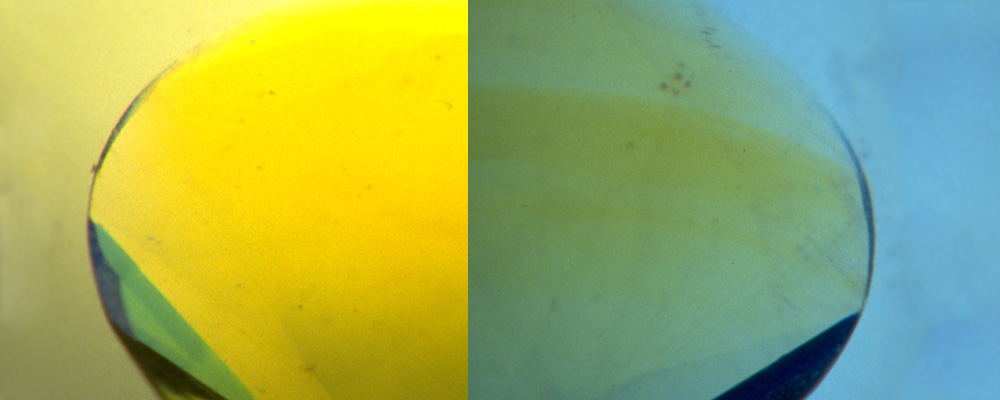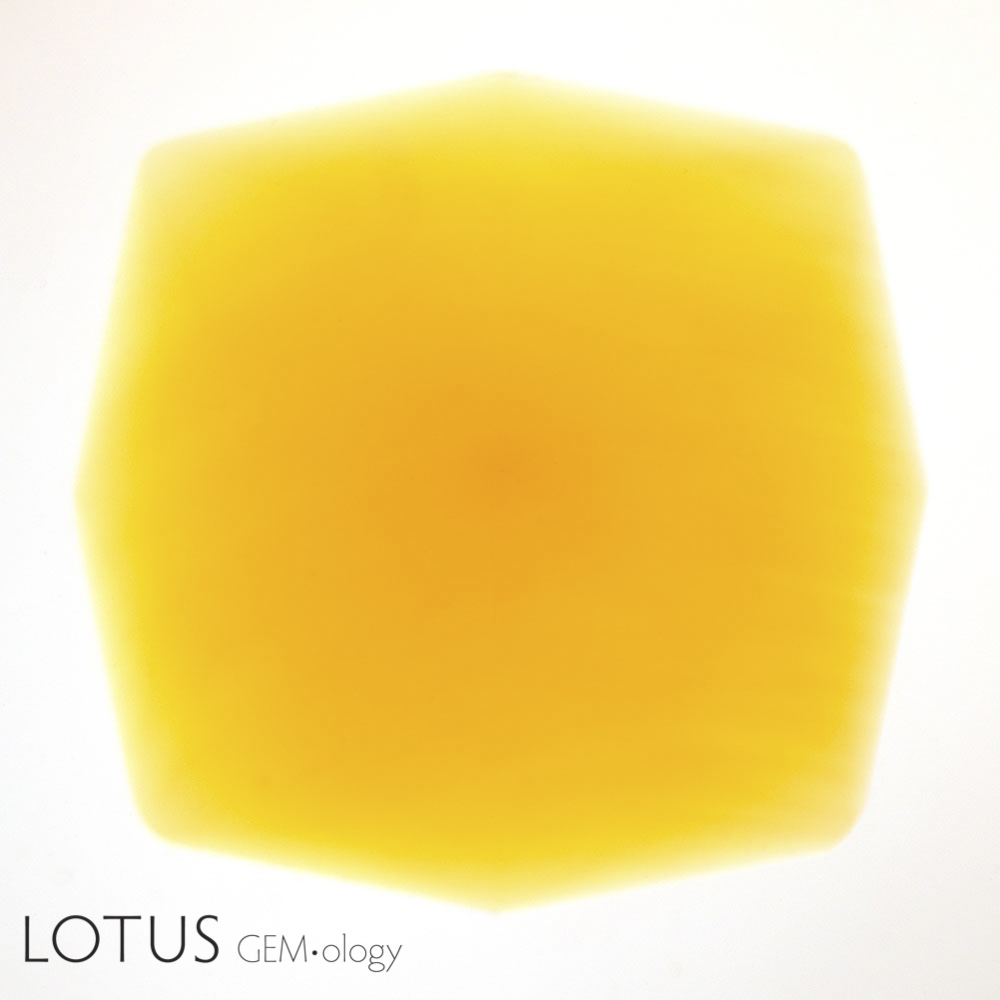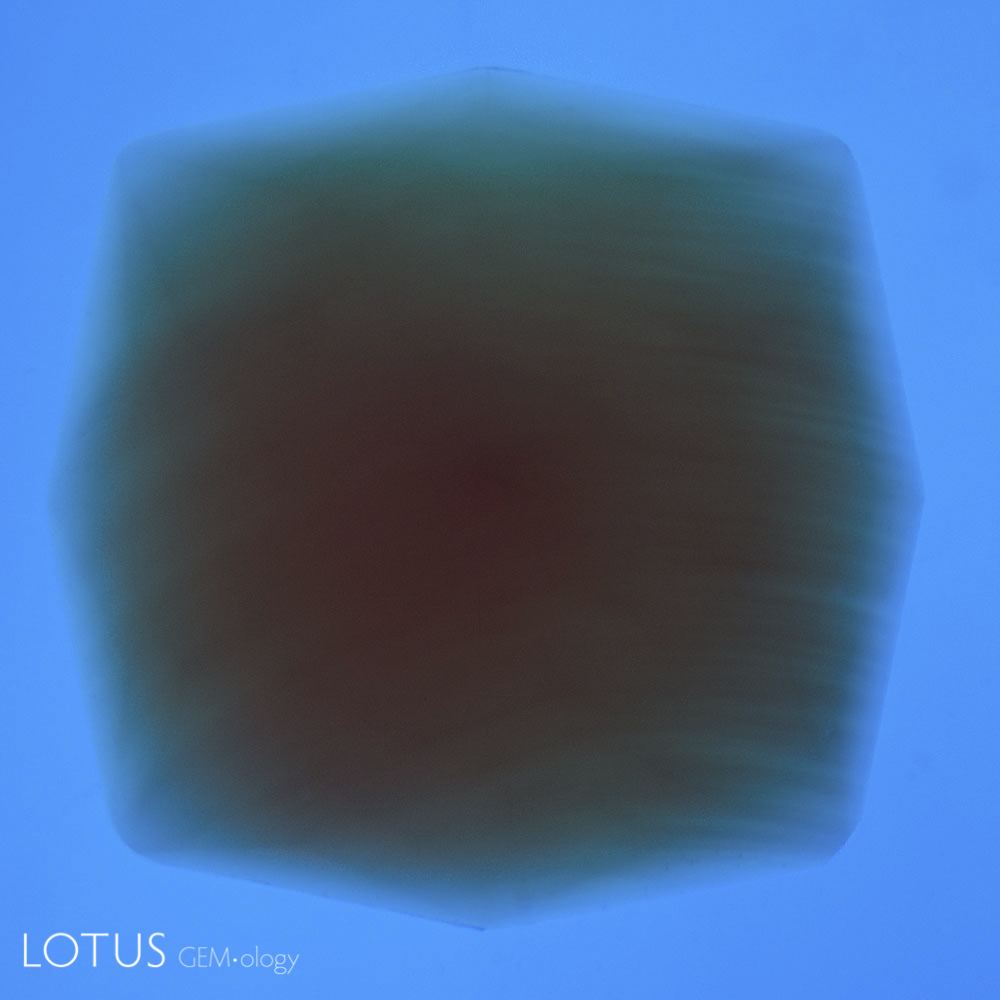Introducing the blue filter as a gemological tool to separate natural and Verneuil synthetic yellow sapphires.
While I will be the first to admit that some gemological nuts require bomb-science technology to crack, others can be handled with the simplest of solutions – and a little bit of serendipity. Take the separation of natural and Verneuil synthetic yellow sapphire. This variety of corundum can sometimes be completely free of inclusions and because of the light color, color zoning is also difficult to locate.
The formative years of my gemological career were spent in Bangkok, corundum capital of the world. And I was forced to test beaucoup quantities of the yellow stone, largely because dealers could find no gemological evidence with their 10x loupes.
At that time, the technique of choice was immersion in di-iodomethane (methylene iodide). This is designed to eliminate surface reflection, thus allowing one to see the pattern of color zoning; straight or angular equals natural, while curved means synthetic.
But even this technique is not without its problems. Placing a yellow stone into a yellow liquid over a yellowish light source is not an Einstein equation.
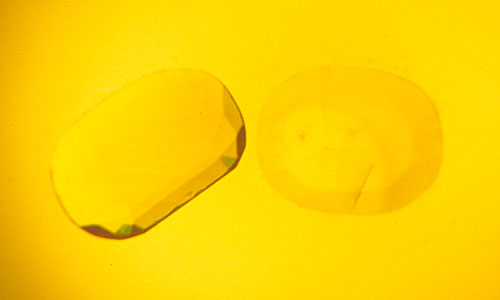 Mellow yellow
Mellow yellow
Two yellow sapphires immersed in di-iodomethane. Yellow stones in a yellow liquid over a yellow light make it extremely difficult to see color zoning. Photo: © Richard W. Hughes
One day, I had a particularly nasty yellow sapphire in for testing. Absolutely clean internally, no iron lines in the spectrum. The only choice was immersion. After an hour of fruitless search for color zoning (and listing from side-to-side from the noxious fumes of an ever hotter immersion liquid), I decided to do a bit of experimenting.
Several weeks prior I had purchased some white plastic filters for use with the microscope at a Bangkok sign-making shop. While there, I noticed they had frosted and clear plastics of virtually every hue; on a lark, I bought a selection of different colors.
Thus on that day in the lab, I had filters close at hand and set about busily trying different colors beneath the immersion cell. Lo and behold, when I used a blue filter, the fog lifted and obvious curved color banding was staring me right in the face. Wow!
A bit of experimentation with different stones showed me that, in order to see color zoning, the filter color should be the complementary color of the gem. With blue sapphires, immersing them in a yellow liquid (like di-iodomethane) is perfect by itself. Thus a white filter works great. For yellow and orange sapphires, a blue filter is best. And for ruby, a green filter does the trick.
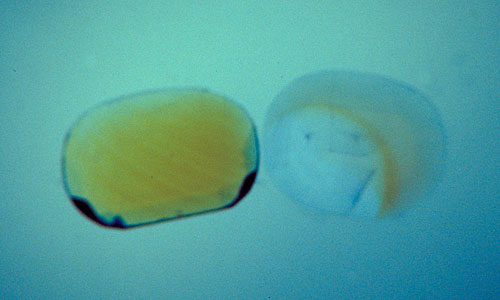 Scream in blue
Scream in blue
The same two yellow sapphires from Figure 1 immersed in di-iodomethane, but with a frosted blue filter beneath the immersion cell. Now the nature of the color zoning is extremely obvious. Photo: © Richard W. Hughes
So there you have it – a simple technique – gemology for the common man. Indeed, it’s something even the bourgeoisie can appreciate.
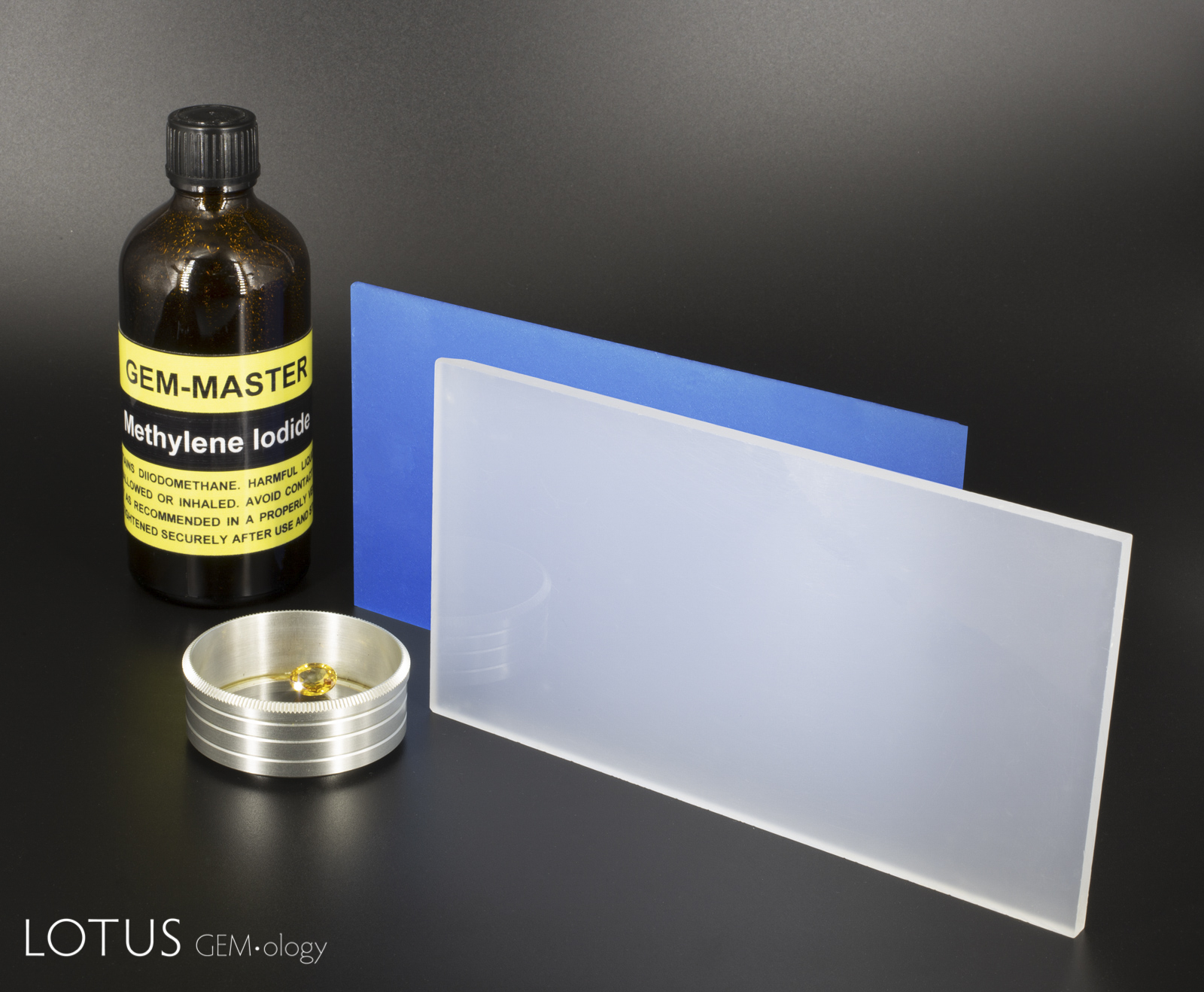 Di-iodomethane (methylene iodide), an immersion cell, and blue and white filters. Photo: Chanon Yimkeativong/Lotus Gemology; click on a photo for a larger image.
Di-iodomethane (methylene iodide), an immersion cell, and blue and white filters. Photo: Chanon Yimkeativong/Lotus Gemology; click on a photo for a larger image.
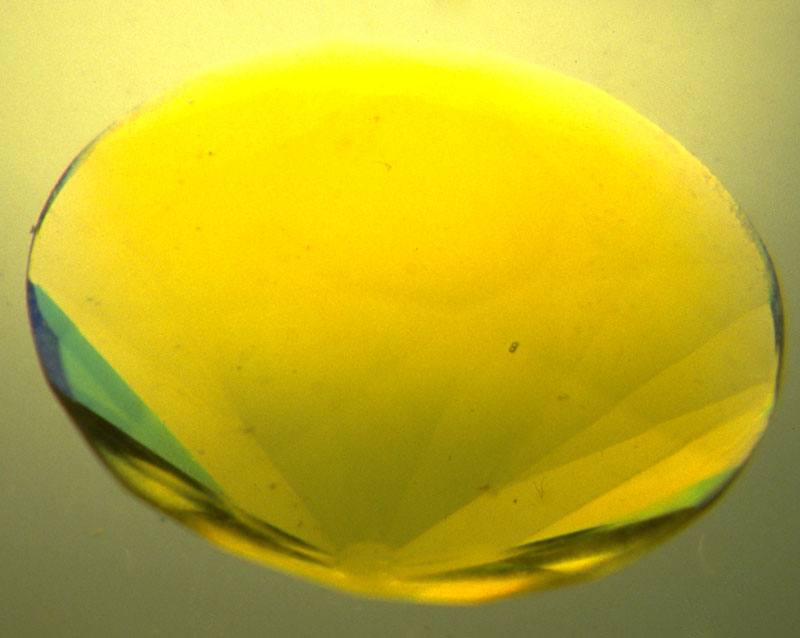
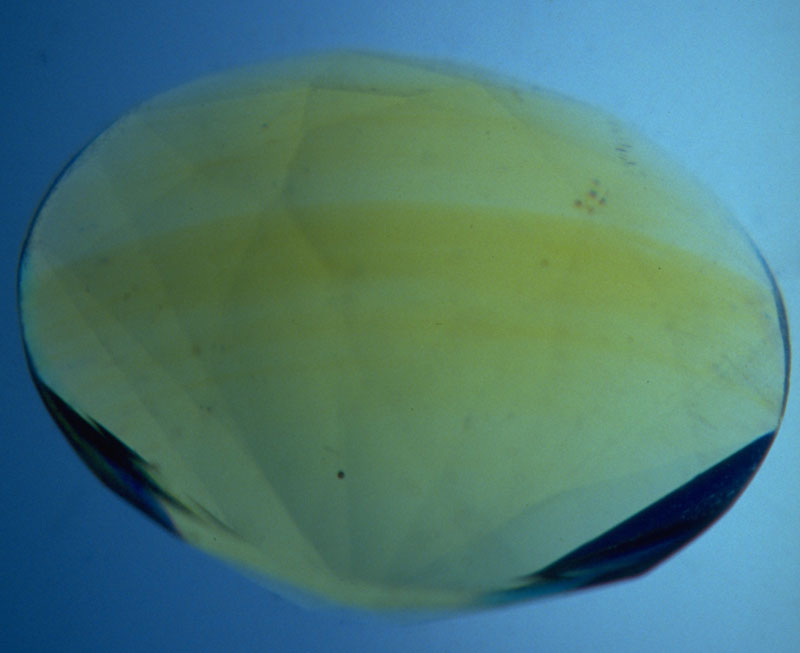 Power to the people
Power to the people
The power of this technique is clear in the above two photos. Photos: © Richard W. Hughes

References & further reading
- Hughes, R.W. (1987) Detection of color banding/growth zoning in natural and synthetic yellow/orange sapphires. ICA Lab Alert, No. 5, 1 pp.
- Hughes, R.W. (1987) Identifying yellow sapphires – two important techniques. Transactions of the XXI International Gemmological Conference, Brazil. MacGregor, I., ed., pp. 35–36.
- Hughes, R.W. (1988) Identifying yellow sapphires – two important techniques. Journal of Gemmology, Vol. 21, No. 1, pp. 23–25.
About the author
Richard W. Hughes is one of the world’s foremost experts on ruby and sapphire. The author of several books and over 170 articles, his writings and photographs have appeared in a diverse range of publications, and he has received numerous industry awards. Co-winner of the 2004 Edward J. Gübelin Most Valuable Article Award from Gems & Gemology magazine, the following year he was awarded a Richard T. Liddicoat Journalism Award from the American Gem Society. In 2010, he received the Antonio C. Bonanno Award for Excellence in Gemology from the Accredited Gemologists Association. The Association Française de Gemmologie (AFG) in 2013 named Richard as one of the Fifty most important figures that have shaped the history of gems since antiquity. In 2016, Richard was awarded a visiting professorship at Shanghai's Tongji University. 2017 saw the publication of Richard and his wife and daughter's Ruby & Sapphire • A Gemologist's Guide, arguably the most complete book ever published on a single gem species and the culmination of nearly four decades of work in gemology. In 2018, Richard was named Photographer of the Year by the Gem-A, recognizing his photo of a jade-trading market in China, while in 2020, he was elected to the board of directors of the Accredited Gemologists Association and was appointed to the editorial review board of Gems & Gemology and The Australian Gemmologist magazine. Richard's latest book, Jade • A Gemologist's Guide, was published in 2022.
Notes
First published in October 2005, while I was at the AGTA GTC. Additional illustrations have been added.

